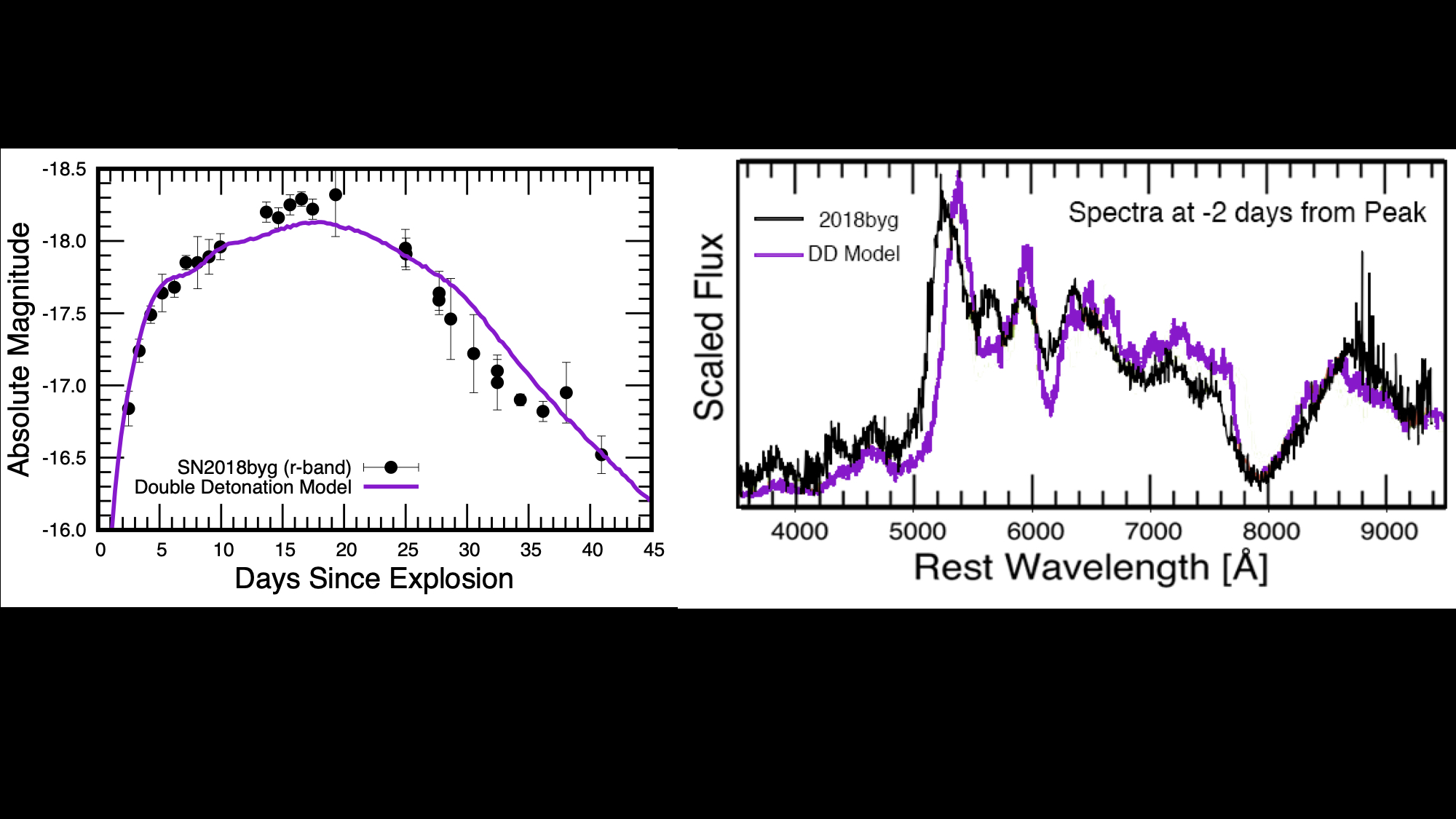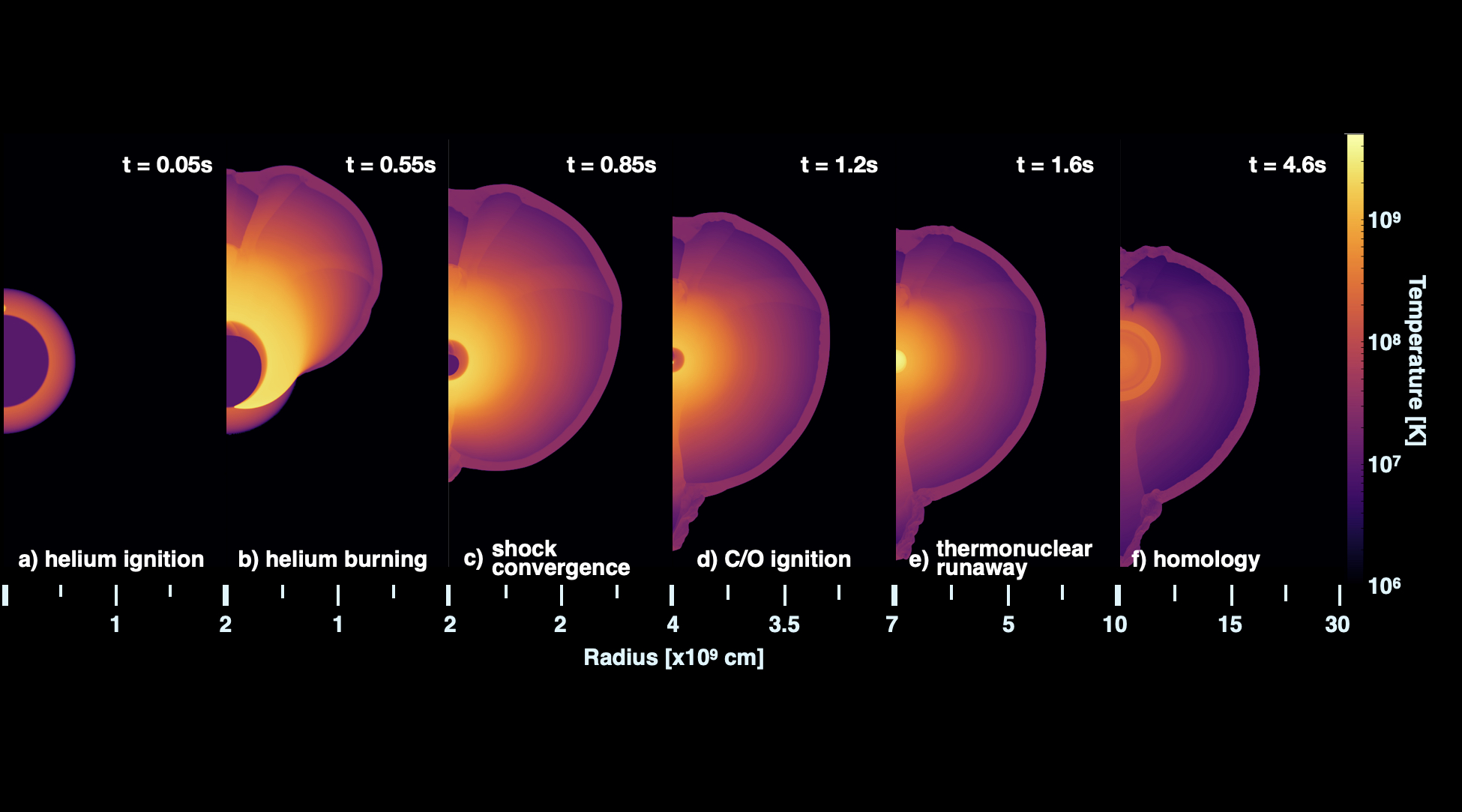Research
As a theoretical and computational astrophysicist, my research spans the gamut of astrophysical transients. I employ a combination of analytic, numerical and high-performance computing techniques to study the physics driving astrophysical explosions and I specialize in connecting that theory to observed transient phenomena. Specifically this looks like a coupling and expertise in both explosion modeling (performing hydrodynamic simulations with nuclear astrophysics in order to understand both the evolution and composition of these explosions), and radiative transport calculations (understanding the electromagnetic radiation of these events in order to produce synthetic lightcurves and spectra of the modeled events). In this manner, I use theory to produce testable predictions that can be compared directly to data.

Thick He Shell Double Detonations
When a double detonation is triggered by a thick helium shell a new type of transient occurs – a Type I supernova with an early flux excess in its lightcurve and a heavily line blanketed spectrum. My modeled predictionswere used to help discover this new, growing, class of transients which currently has roughly 10 members. Continue reading Thick He Shell Double Detonations

Type Ia Supernovae
I am a leading expert in one of the pathways to Type Ia supernovae – the double detonation mechanism. In this scenario a White Dwarf is able to explode below the Chandrasekhar mass limit through the aid of an accreted helium shell. An ignition of this helium can send a shock wave into the center of the WD which, upon convergence, can ignite the core, causing a thermonuclear runaway resulting in a Type Ia-like explosion. Continue reading Type Ia Supernovae

Supernova Remnants
I have been working in a new direction in order to develop a new method for analyzing SNRs.The goal was to establish a quantitative method for understanding the morphology of SNRs. We showed that by decomposing the remnant into spherical harmonics and building a power spectrum of angular modes, it is possible to identify which scales in the remnant are dictated by turbulence and which exhibit features endemic to the underlying supernova. Continue reading Supernova Remnants

Nebular Phase Supernovae
The nebular phase occurs after the SN ejecta expands and cools until it reaches a point where it becomes diffuse enough that it is optically thin to radiation. At this phase, the ejecta cools through emission spectra that reveal the composition of the inner regions of the SN. I am currently studying nebualr phase SNe through both theoretical and observational means. Continue reading Nebular Phase Supernovae